Precalc/Trig Chapter 6: graphing/inverse trig, verifying identities, laws of sin+cos
1/85
Earn XP
Description and Tags
for the class at IWA; includes info from previous chapter to make sure everyone knows it for our test
Name | Mastery | Learn | Test | Matching | Spaced |
|---|
No study sessions yet.
86 Terms
general equations for sine and cosine graphs
f(x) = Asin(Bx-C)+D and Acos(Bx-C)+D
What does A mean in an equation?
Amplitude (how far the graph goes up, how far the graph goes down)
What does B mean in an equation?
Frequency (number of cycles in 2pi; when B=1 there is one cycle in 2pi)
What does D mean in an equation?
vertical shift
What is the phase (horizontal) shift in a sin/cos equation?
C/B
Period in a sin/cos graph
2pi/B
To graph a sin/cos graph…
divide the period by four, giving you the minimums, maximums, and intercepts
Range
y values
domain
x values
How do you find a period in a graph?
count length of one cycle (one up, one down)
How do you find B from a graph
set 2pi/B equal to the period and solve
If the B value in a tangent or cotangent graph is 1, the period is…
pi
to graph tangent or cotangent, fine the values where the function is —. These will be — — —.
undefined, vertical asymptote values
general equations for tan and cot graphs
y=tanx and y=cotx
What is the period in a tan/cot graph if B is NOT 1?
pi/B
For tangent, set Bx = —, —, — to find vertical asymptotes
-pi/2, pi/2, 3pi/2
For cotangent, set Bx = —, —, — to find vertical asymptotes
-pi, 0, pi
To graph a csc or sec graph…
use the reciprocal graph as a guide. The x intercepts will create vertical asymptotes on the reciprocal graphs
On csc and sec graphs, the x-ints from the guide graphs are…
vertical asymptotes
On csc and sec graphs, the relative max/mins from the guide graphs are…
vertexes
Range restrictions for inverse trig
sin and csc: q1 and q4
tan and cot: q1 and q4
cos and sec: q1 and q2
y=ArcSinx is the same as…
y=sin^-1x
each inverse trig expression has only — —-, which MUST be in the — restriction.
one answer, range
for special angle value expressions, evaluate the inside inverse trig function for the —, then find the — —.
angle, trig ratio
For trig values with numbers not on the unit circle, — — — from the inverse trig statement, then find the — —.
draw the triangle, trig ratio
when simplifying a trig function in terms of x, draw a triangle, fill in the missing side with a — — and find the trig ratio
x expression
reciprocal identity of sinx
1/cscx
reciprocal identity of cosx
1/secx
reciprocal identity of tanx
1/cotx
reciprocal identity of cscx
1/sinx
reciprocal identity of secx
1/cosx
reciprocal identity of cotx
1/tanx
sin²x + cos²x= —
1
1+tan²x= —
sec²x
1+cot²x= —
csc²x
1-sin²x and sin²x-1= —
cos²x
1-cos²x and cos²x-1= —
sin²x
even-odd identity rules
cos and sec will be pos with a negative x input (will still be positive if +x). Other ratios will be negative with a negative x.
sin(A+B)
sinAcosB+cosAsinB
sin(A-B)
sinAcosB-cosAsinB
cos(A+B)
cosAcosB-sinAsinB
cos(A-B)
cosAcosB+sinAsinB
(note: mrs. rich said this won’t be on the test, but it’s here for memorization.)
tan(A+B)
tanA+tanB/1-tanAtanB
(note: mrs. rich said this won’t be on the test, but it’s here for memorization.)
tan(A-B)
tanA-tanB/1+tanAtanB
know what functions are positive in what quadrants
q1: all
q2: sin csc
q3: tan cot
q4: cos sec
what would you do when given an equation like sin(pi/3 + pi/4)?
write out equation and use triangles to find values. then solve.
what would you do when given an equation like sin(5pi/12)?
find numbers that add or subtract to what is in parenthesis and also simplify to /4, /3, or /6. Then solve as if you were given the numbers.
If given some ratios of A and B in certain quadrants, draw — and then — as normal.
triangles, solve
sin2x
2sinxcosx
cos2x
cos²x-sin²x
(note: mrs. rich said this won’t be on the test, but it’s here for memorization.)
tan2x
2tanx/1-tan²x
In a question where you are given a trig ratio and its quadrant, you would…
draw the triangle and plug the subsequent values/ratios into what the question asks for
angles and measurements for 30/60/90 triangle
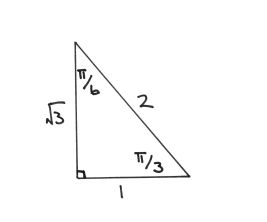
angles and measurements for 45/45/90 triangle

sin in terms of x,y
y
cos in terms of x,y
x
tan in terms of x,y
y/x
csc in terms of x,y
1/y
sec in terms of x,y
1/x
cot in terms of x,y
x/y
unit circle points and angles
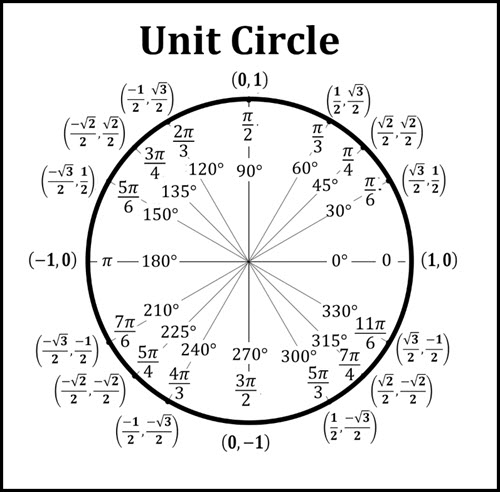
tangent graph
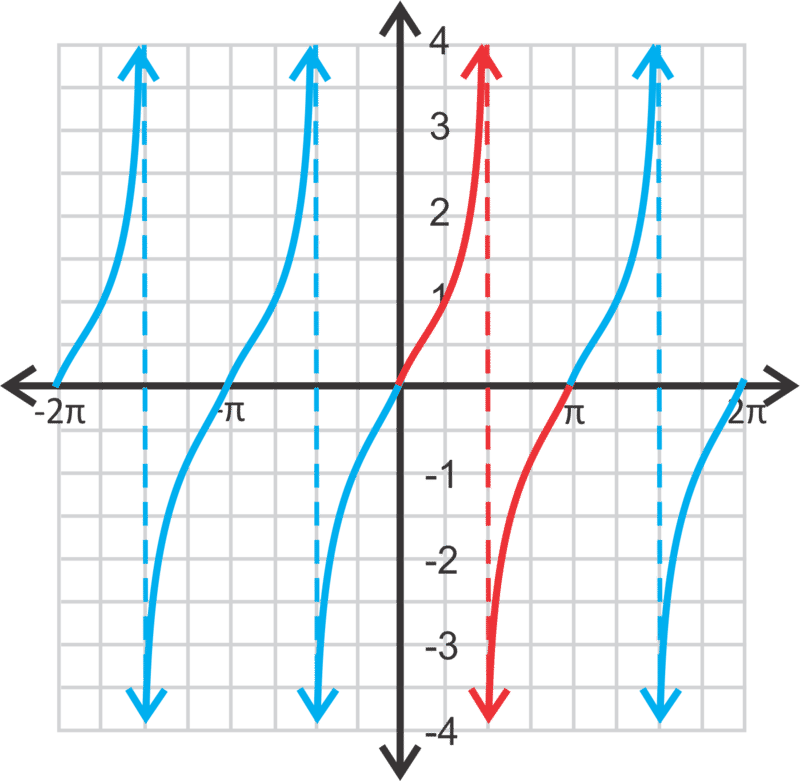
cotangent graph
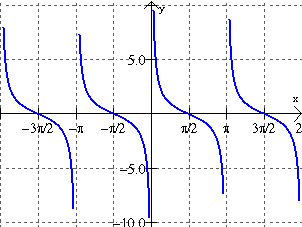
sin graph
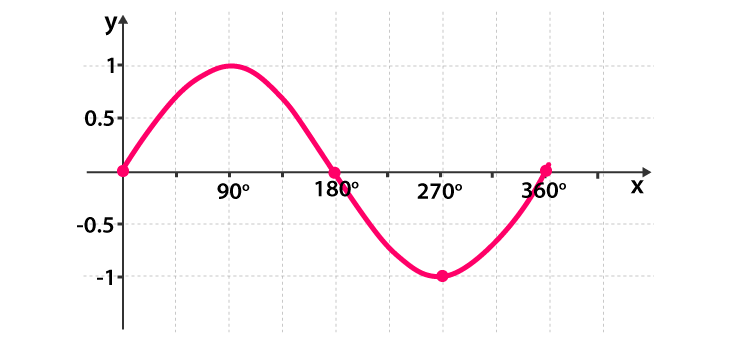
csc graph
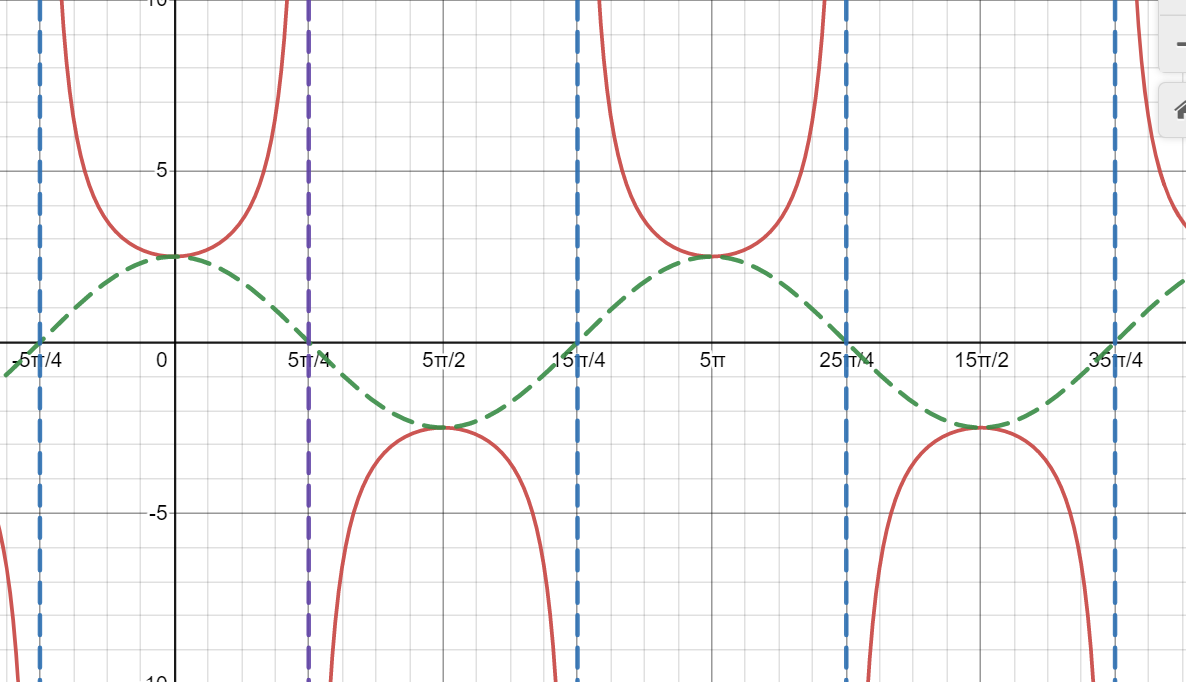
cos graph
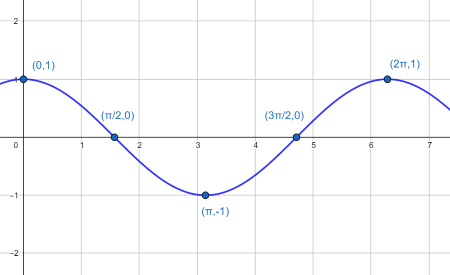
sec graph
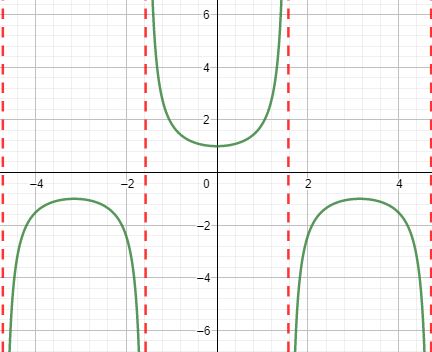
oblique triangle
triangle that does not contain a right angle
has either three acute angles or two acute angles and one obtuse angle
To use the law of sines…
need two angles and the side across from one of the angles OR two sides and the angle across from one of the sides
Only — ratios are used to solve for one unknown part of the triangle when using the law of sines.
two
ambiguous case
it’s possible to have 0, 1, or 2 triangles for two sides and one angle
In the ambiguous case, you have 0 triangles when…
sin > 1
In the ambiguous case, you have 1 triangle when…
adding up the given angle and ang equal to one you solved for is > 180
In the ambiguous case, you have 2 triangles when…
adding up given angle and ang equal to one you solved for is < 180
Area for oblique triangle
½ bc SinA, ½ ab SinC, ½ ac SinB
law of cos is needed to solve for the missing part for:
SAS, SSS
once missing part of oblique triangle is found with law of cos, — — — can be used
law of sines
cos of pi/6
square root of 3/2
sin of pi/6
1/2
tan of pi/6
square root of 3/3
sin of pi/4
square root of 2/2
cos of pi/4
square root of 2/2
tan of pi/4
1
cos of pi/3
1/2
sin of pi/3
square root of 3/2
tan of pi/3
square root of 3